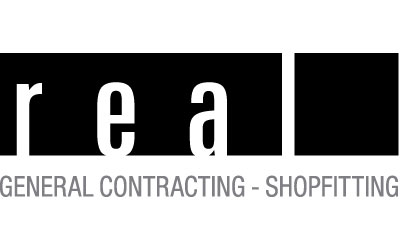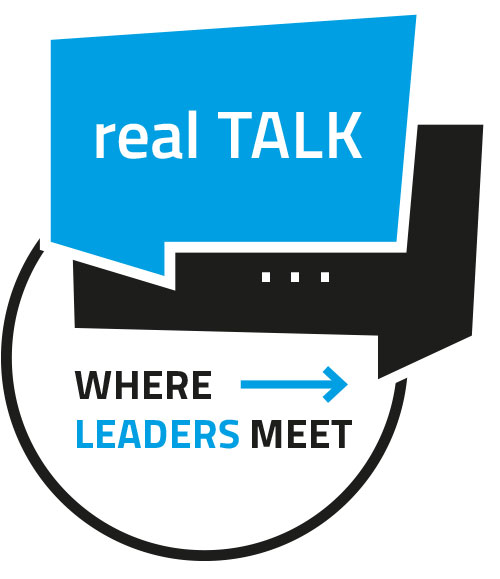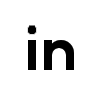We talk to Anne-Charlotte Vuccino, the author of „Yoga in Office“ and founder of the french startup YOGIST- Well At Work. The former management consultant and graduate of one of France’s most prestigious business schools, discovered yoga for herself after a serious traffic accident. After this drastic experience and the effect of the yoga lifestyle on well-being, she developed her own methodology, which she christened YOGIST- Well At Work. Since then, she sees it as her mission to help people cope with stress in everyday life and work life with the Yogist method.
red. Miss Vuccino, what is Yoga in your definition?
Vuccino. For me, Yoga is a moving and breathing discipline that modern, western workers desperately need to stay healthy and pain-free at work in the digital age. Sedentary lifestyle concerns most of us, especially since the covid crisis, yet our mind and body are not at all designed to stay seated all day long in front of one or several screens. We spend most of our awake life hours working : this is when we need to practice yoga, while we work. Not during our lunch break or on the weekends. Experts recommend that we move and take mental or physical breaks at least every 20 minutes !
red. Why do we use this very old technique or philosophy; don’t we have similar approacheshere in the western world?
Vuccino. To be exact, yoga is a very old practice, but its incredible evolution over the last 30 years has brought us a more modern version. The yoga we know is not the “ancient” one. It has already been modernized, and westernized, closer to a fitness practice sometimes than a spiritual one. Yet, for some serious, stressed and fast-living workers and leaders, yoga is still too “new age” or “esoteric” to be taken seriously, too sweaty or sporty, or too “still” or boring for others… In a nutshell, those who need yoga the most are the ones who don’t even consider trying it. This is why I worked to create a corporate method, that can be tailored to all workplaces and all professions, that anyone can practice at his work desk without feeling ridiculous: no equipment, no sport clothes… and no chakras!
red. How come you developed a new method that you call the yogist lifestyle?
Vuccino. When I was a business school student, I led a humanitarian project in Africa. I was hit by a motorcycle in Benin, and I caught multiple infections in my leg and nearly had to have it amputated. That was a turning point for me because my desire to make a career in developing countries wasn’t an option anymore because I couldn’t walk properly, so I had to settle for a very sedentary lifestyle and a very sedentary career as a consultant. I joined a consulting firm in 2009, and I was immediately involved with extremely high-level consulting for CEOs and international companies here in Paris. While working, I used yoga to rehabilitate myself from my accident and it really improved my health. I started giving classes for small groups of friends of mine, young graduates working in banks or consulting who were experiencing back pain and trouble sleeping. One day, I was with one of my clients, the CEO of KPMG in France. We were preparing for his shareholder conference, and he asked me to give him some tips to stay focused and to improve his posture. For 10 minutes I had him go through some breathing techniques and very simple physical exercises to relieve his back and improve his breathing and his concentration. It hit me that all the presentations I’d written for him for the last six years hadn’t had the same impact as these 10 minutes of efficient and practical techniques! That is when I realized I had to do something on a larger scale. With my boss’s blessing and assurance that they would be my first client whenever I was ready, I booked a flight to Bangalore and went to see a yoga teacher who specialized in therapeutic yoga. I trained with him for just under two months and got my teacher’s certification. When I came home, in 2015, the first thing I did was to identify the main tensions and pains that employees were suffering from when working. I identified these and tried to link them with yoga poses and techniques that would help and which could be adapted and used without changing clothes or sweating, and which could be done at your desk without a mat. I worked with physiotherapists and neuroscientists to adapt yoga to the Corporate Lifestyle: no mat, no change of clothes, no chakras. The YOGIST method was born.
red. Can you say what the YOGIST Lifestyle is? The challenge would be to just use three short sentences.
Vuccino. YOGIST teaches employees easy and regular mind-body breaks while they work. Ophthalmic fatigue, sciatica pain, lower back pain, hand tendinitis, stress, fatigue, or insomnia…: YOGIST mental and physical breaks target the ills of modern work. The YOGIST- Well at Work approach and method aims at preventing the harmful effects of modern work life such as stress, sedentary lifestyle, screen work or repetitive movements to help you and your teams stay healthy and efficient: this is our mission and the new priority for companies in the Covid era. It also brings the opportunity to integrate wellness as a strategic ingredient of corporate management.
red. So we understand your method has very much to do with stress relief. What does this have to do with work and office culture in a world that has less and less time? Isn’t it better do live and love a job … and therefore don’t feel stress?
Vuccino. Even though people can relate that they have less and less time, they always have time to take care of their health. But this is also true: they can’t dedicate as much time as they would love to, so that is why we have built our method with short exercises targeting specific pains and body parts. Secondly, having a job that you live and love does not guarantee that you will not experience stress or musculoskeletal pain! As much as a salesman may like to interact with his customers and therefore be on his feet all day, or an executive may like his job but spend long hours sitting in a meeting, this will not spare them from physical pain. This is where we come in to improve their quality of life at work. Before the Covid crisis, 83% of employees suffered from muscular pains and brain fatigue in the office. 70% of them feel that these tensions have aggravated while they work remotely. If you ignore these tensions, you’ll increase the turnout. Keep your employees healthy and happy in the workplace or remote is the best way to engage them on the long run.
red. What about the companies, your clients? Businesses still have to donate time … isn‘t there any hesitancy?
Vuccino. Modern age employees neglect their body, damaging their health and productivity, and ultimately blame it on their company. I think that companies have understood for some time now that investing in people is a guarantee of prosperity for their company. As Richard Branson said : “Take care of your employees, they will take care of your clients”! Helping employees reduce their pains and be more productive can’t be a waste of time and money for the employers. It is part of their soft skills, after all, and an increasing stake of Corporate Social responsibility. Reducing turnover and absenteeism that are due to physical or mental pains should be a priority in HR investment.
red. Do you have any really great companies who work with your concepts?
Vuccino. We are a very small team, yet we work with many companies from different fields that appreciate our premium and unique approach. We are very proud to say that LVMH, AXA Insurances, Sanofi, Orange and Credit Agricole have adopted YOGIST worldwide to help their teams be Well At Work.
red. Your book „Yoga in the Office“– at least that’s the German title – is a great read. Do you have a short version on the internet … to start with some techniques?
Vuccino. In the past few years, we have developed a digital bodyguard that reminds you to take a mental or physical break while working: the Yogist Chatbot that you can try out here in English on yogist.io ! Answer the chatbot 3 questions and access a guided video exercise that lasts 2 minutes, tailored to your needs, and that you can do right away, at your desk or on your smartphone. It will remind you to move regularly and selects the best exercises for you thanks to an algorithm that knows you better over the sessions to relieve muscle tension, concentrate or relax.
red. Another aspect … do companies use the implementation of the YOGIST programme for their employer branding?
Vuccino. Of course, in the current war for talents, attracting and retaining talents is key. Showing your teams and candidate that you CARE, in a broader way than the competition or that the law forces you too, is obviously a competitive advantage.
red. Do you see a chance to provide The YOGIST Lifestyle on a digital basis? Meaning do you teach online?
Vuccino. Of course! It is already the case. Since the beginning of the Covid Crisis, 100% of the YOGIST programs are delivered online for remote workers who need to breathe and move, and for their managers who need to animate their teams. We operate through …
- online webinars and team buildings to raise awareness, often by surprise during a team meeting
- 6-Month live training programs that employees can follow each week, through Zoom or Teams, with different targets and themes each time
- our digital bodyguard and our e-learning programs
- our “train the trainer” programs during which we train Corporate Wellness Ambassadors who can act within their teams. In the midst of Covid, we even trained the Hungarian National Bank HR officers!
red. Do you have a motto in life?
Vuccino. Practice… and all is coming!
red. Thank you very much for the interview.
Vuccino. I thank you! It was a real pleasure to exchange with you about YOGIST-Well At Work action. More information on our website www.yogist.com.




